saints & the Rosary
Throughout the history of the Church, there has been a strong link between saints and the Rosary. Though some modern-day Christians are concerned that too much devotion to the Blessed Virgin Mary might take emphasis away from Christ, countless saints show by their example that the opposite is true. According to Pope St. John Paul II, history teaches that filial devotion to the Mother of God increases intimacy with Jesus and leads Christians to the highest levels of perfection:
“The words ‘Behold, your mother!’ from the Gospel According to John 19:27, express Jesus’ intention to inspire in his disciples an attitude of love for and trust in Mary, leading them to recognize her as their mother, the mother of every believer.”
For guidance in praying the Rosary, see our diagram of how to pray the  Rosary. The Turning God’s Word Bible study Scripture and the Rosary: New Testament Mysteries, Old Testament Parallels has been granted an imprimatur from the Most Reverend Richard E. Pates, bishop emeritus of Des Moines, and free downloadable lessons are available on our website throughout the year. At ex libris—Rosary bookshelf, you can read reviews of books about the Blessed Virgin Mary and find links to papal documents about the Rosary. Also check out saints & the Rosary, our page of information about saints who were especially devoted to the Rosary.
Rosary. The Turning God’s Word Bible study Scripture and the Rosary: New Testament Mysteries, Old Testament Parallels has been granted an imprimatur from the Most Reverend Richard E. Pates, bishop emeritus of Des Moines, and free downloadable lessons are available on our website throughout the year. At ex libris—Rosary bookshelf, you can read reviews of books about the Blessed Virgin Mary and find links to papal documents about the Rosary. Also check out saints & the Rosary, our page of information about saints who were especially devoted to the Rosary.
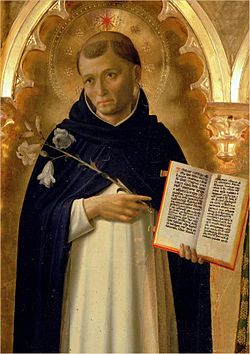
St. Dominic (1170-1221)
This Spanish priest’s name is widely associated with the Rosary because he encouraged widespread devotion to these prayers and used the Rosary to win over many converts from heresy. Scholars are unclear about the exact origin of the Rosary, but the Blessed Virgin Mary is believed to have appeared to St. Dominic in a vision and entreated him to pray the Rosary and to teach it to others, which the saint did with great passion and persistence. St. Dominic is the founder of the Dominican religious order (the Order of Preachers).
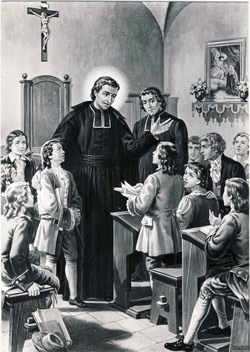
St. Louis-Marie Grignion de Montfort (1673-1716)
This devout French priest also was a third-order Dominican. His writings have contributed greatly to Catholic understanding of the Blessed Mother and the Rosary, and they had a profound influence on Blessed John Paul II. Among Catholics, St. Louis de Montfort’s name is practically synonymous with the Rosary and devotion the the Blessed Virgin Mary. The cause to add St. Louis de Montfort’s name to the list of Doctors of the Church now is being pursued.
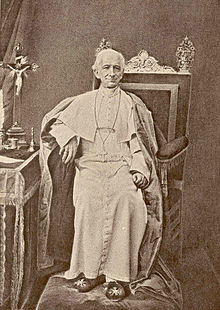
Pope Leo XIII (1810-1903)
Pope Leo XIII is sometimes called “the Rosary Pope” because he issued so many encyclicals (a total of 11) about the Rosary and the Feast of the Queen of the Holy Rosary that is celebrated by the Church each October 7. The feast was established by Pope Pius V in honor of the victory of the battle of Lepanto on October 7, 1571, which saved Europe from Turkish invasion after a campaign to pray the Rosary throughout Europe. The Vatican Web site has more information about Pope Leo XIII.
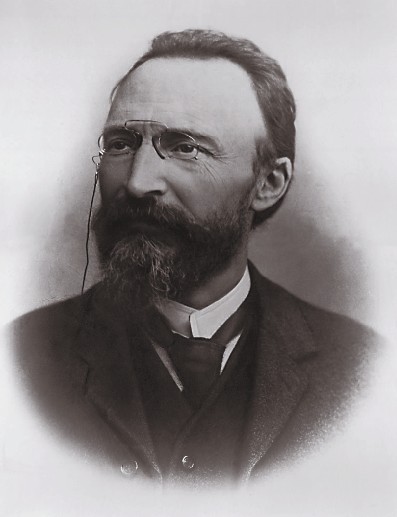
Blessed Bartolo Longo (1841-1926)
Blessed Bartolo Longo grew up praying the Rosary, but he later lost his faith and became a satanist. Through prayers of his family and friends, he returned to the Church and became a third order Dominican, taking the name Fratel Rosario (Brother Rosary). He established a shrine of Our Lady of the Rosary in Pompeii, Italy, which remains a popular pilgrimage site today.
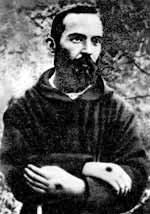
St. Pio of Pietrelcina (1887-1968)
One of the most beloved of contemporary saints, “Padre Pio” became a Capuchin novice when he was 16. He was ordained a priest in 1910, and in 1918 he became the first priest in history to bear the stigmata (the visible wounds of Christ). He often is quoted as saying: “Love the Madonna and pray the Rosary, for her Rosary is the weapon against the evils of the world today.” The Padre Pio Foundation of America has more information about Padre Pio.

Blessed Teresa of Calcutta (1910-1997)
Winner of the 1979 Nobel Peace Prize, Blessed Mother Teresa is another of the most well-known and well-loved Christians of modern times. She prayed the Rosary continuously. On the day of her beatification, St. John Paul II called her an “icon of the Good Samaritan” because of her tireless work among the poorest of the poor. In his homily that day, Blessed John Paul II continued: “Is it not significant that her beatification is taking place on the very day on which the Church celebrates World Mission Sunday? With the witness of her life, Mother Teresa reminds everyone that the evangelizing mission of the Church passes through charity, nourished by prayer and listening to God’s word. Emblematic of this missionary style is the image that shows the new Blessed clasping a child’s hand in one hand while moving her Rosary beads with the other.” In her book, Come, Be My Light, Blessed Mother Teresa explained her instruction to sisters in her religious order: “Never go to the slums without first having recited the Mother’s praises; that is why we have to say the Rosary in the streets and in the dark holes of the slums. Cling to the Rosary as the creeper clings to the tree—for without Our Lady we cannot stand.” (For more information see the Missionaries of Charity official website.)
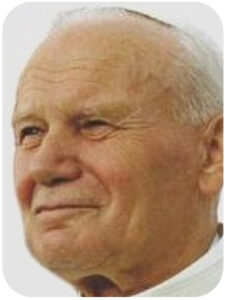 Pope St. John Paul II (1920-2005)
Pope St. John Paul II (1920-2005)
This popular Pope took as the motto of his papacy “Totus Tuus,” two words he borrowed from St. Louis de Montfort to describe his own total consecration to the Blessed Virgin Mary. Loosely translated from the Latin as “totally yours,” the motto reflects Pope St. John Paul II’s belief that the closer one is to the Blessed Mother, the closer one is to her Son, Jesus Christ. The first non-Italian Pope since 1523, Pope St. John Paul II had the second-longest pontificate in the history of the Catholic Church (behind Pope Pius IX). He is considered one of the most influential leaders of the 20th century. He was instrumental in ending communism in Poland (his homeland) and all of Europe. The most well-traveled pope in history, he also instituted World Youth Day. His motto borrowed from St. Louis de Montfort is from the first two words of this Latin prayer to the Blessed Virgin Mary: Totus tuus ego sum, et omnia mea tua sunt. Accipio te in mea omnia. Praebe mihi cor tumm, Maria. (“I belong entirely to you, and all that I have is yours. I take you for my all. O Mary, give me your heart.”) The Vatican Web site has more information about Pope St. John Paul II.
